

The People Building AI with 'Existential Risk' Are Really Not Getting 'Oppenheim...
source link: https://www.vice.com/en/article/5d9y5n/the-people-building-ai-with-existential-risk-are-really-not-getting-oppenheimer
Go to the source link to view the article. You can view the picture content, updated content and better typesetting reading experience. If the link is broken, please click the button below to view the snapshot at that time.

The People Building AI with 'Existential Risk' Are Really Not Getting 'Oppenheimer'
The release of Oppenheimer has created some truly terrible reactions. Christopher Nolan’s new film is a mythical recounting of the creation of the nuclear bomb during World War II. It was a widespread effort involving thousands of people and many locations, but the film focuses on physicist and Los Alamos head J. Robert Oppenheimer and his horror at the world he’s built and the people who will use and abuse both science and his story.
Oppenheimer has emerged into a world newly concerned with the possibility of a nuclear weapon being used again, and at a time when Silicon Valley is developing a technology that its inventors claim is just as dangerous as the atom bomb: AI. So far, their reactions to the film reveal a viewpoint that isn’t nearly as critical or self-reflective as one might hope for people developing a tool that supposedly poses an “existential risk” to humanity to have.
Sam Altman, CEO of ChatGPT maker OpenAI, previously said that he wanted an international body like the U.N.’s nuclear watchdog the International Atomic Energy Agency to regulate the development of AI. In May, Altman and others signed a letter that warned the tech he was working on could destroy civilization. “Mitigating the risk of extinction from AI should be a global priority alongside other societal-scale risks such as pandemics and nuclear war,” the letter said.
After watching Oppenheimer, Altman was upset that the movie about the creation of a weapon that melts flesh from bone and seeded several generations of humans with traumatic nightmares wasn’t inspirational enough.
“I was hoping that the oppenheimer movie would inspire a generation of kids to be physicists but it really missed the mark on that,” Altman said on Twitter. “Let's get that movie made! (i think the social network managed to do this for startup founders.)”
The Social Network is, famously, not very inspirational. It’s a movie about the creation of Facebook and explores the personal emptiness at the heart of the ambition of tech CEOs. It’s not ambiguous. Expecting Oppenheimer—again, a movie about a weapon so devastating that it spawned separate fields of medicine—to cheerily inspire a generation of physicists is a misreading of history and film tone so grotesque that I’m not sure what to make of it.
Altman is not alone. Andrej Karpathy, another OpenAI employee who once worked on AI at Tesla, was also let down because the harrowing exploration of the personal guilt of a scientist who helped invent a superweapon wasn’t enough like a Marvel movie.
“My hope going into Oppenheimer was that it would be a kind of true story ‘Avengers of Science,’” he said in a tweet. “It's still a good movie with lots of gems but the focus was elsewhere.”
The creation of the atom bomb was a moment so consequential that it’s hard to wrap your mind around. Even Oppenheimer struggles to encapsulate all the complexities. The CEOs who have built word calculators like ChatGPT are invested in people believing, without evidence, that the creation of large language models is a scientific achievement on par with the creation of these world-ending weapons. If the public, investors, politicians, and military leaders, think of AI advances as similar to nukes, it would be very good for the CEOs.
This is evident in a recent New York Times op-ed by Palantir CEO Alex Karp, whose company is developing its own AI platform aimed at military customers. Karp explicitly compares AI tools to nuclear weapons, and says they must be regulated appropriately, but also that companies have an obligation to develop them and that the public and “coastal elites” who “do little to advance the interests of our republic” have to just get with the program.
ChatGPT is not the bomb. In the middle of the 20th century an unprecedented collection of scientists partnered with U.S. industry and the Pentagon to push science to its bleeding edge. The result was a weapon demonstrably capable of destroying human civilization. The observable zenith of this science was reached in 1961 when the Soviet Union dropped a bomb that created a fireball five miles wide and more than six miles high. The blast wave circled the planet three times. Experts estimated that people as far away as 62 miles from the blast zone would have experienced third degree burns.
In the early years of the 21st century a group of philosophy students, entrepreneurs, programmers, and salesmen have created a word calculator that appears to be acting less capably the longer it is turned on.
Karp’s op-ed includes a graph that purports to plot the achievements of AI against those of the nuclear bomb. According to Karp’s graph, 50,000 kilotons of explosives is comparable to 10 trillion “parameters” in an AI model. Here, software that can’t even write an article about Star Wars that isn’t littered with errors is comparable to the deaths of hundreds of thousands of people in the atomic bombings of Hiroshima and Nagasaki.
In an interview with the Bulletin of the Atomic Scientists, Nolan said that he made the film partly because only the Bulletin and the Doomsday Clock exist to remind us of the “terrible situation” we’re in with nuclear weapons. And, partly, because the real Oppenheimer was a person of such sharp contradictions. “I believe you see in the Oppenheimer story all that is great and all that is terrible about America’s uniquely modern power in the world,” he told the outlet.
We should all be worried when the people loudly saying that they’re creating a new atom bomb in software only see the great, and none of the terrible.
ORIGINAL REPORTING ON EVERYTHING THAT MATTERS IN YOUR INBOX.
By signing up, you agree to the Terms of Use and Privacy Policy & to receive electronic communications from Vice Media Group, which may include marketing promotions, advertisements and sponsored content.

カオニャオ・マムアンとパッタイだけじゃないタイ料理の魅力
私が初めてタイに行ったときに頭の中にあったのは、たった1つ、カオニャオ・マムアンのことだけでした。最高に美味しいタイ産マンゴーともち米のデザートとしてご存じかもしれません。ジューシーなトロピカルマンゴーにココナッツミルクを染み込ませたもち米を合わせ、その上に炒った緑豆やゴマを散らしてほんの少しカリカリ感が加わり、魔法がかかったようなおいしさです。
その休暇中、レストランやデリバリー、屋台でたくさんのタイ料理を食べました。私がよく知っているパッタイ(タイ風焼きそば)、イエロー/グリーンカレー、ソムタム(青パパイヤのピリ辛サラダ)、ゲーン・マッサマン(マッサマンカレー)や、国境を越えて世界中のタイ料理のメニューに載っているおかげで名前だけは知っている料理などです。
しかし、何度も訪れるうちに、おなじみの食材を使ったおなじみの料理に固執することで、いかに自分の体験を欺いてきたかを思い知りました。これはどこに行っても、また新しい文化や言語に直面する時はいつでも、ほとんど当てはまることなのです。慣れ親しんだ領域から一歩踏み出し、新しさに身を投じるのは、なかなか勇気がいることです。私が不安を乗り越え、ほとんど読めないメニューを見ながら、おいしそうな料理を指差して注文するようになるまでには時間がかかりました。
その後、タイ料理が世界中で愛される理由である、味(辛味、酸味、塩味、甘味、苦味)、食感(歯ごたえ、柔らかさ、もっちり感、サクサク感)、風味(魚介類、ハーブ、コク、あっさり感)のバランスの良さを堪能するのに時間はかかりませんでした。
私のように、慣れ親しんだものに固執しないでください。次に「微笑みの国」に行くときは、その先へと進んでみてください。
この発見の旅への近道のために、私たちはタイの革新的なシェフお二人から大変特別なご協力をいただきました。トン・ティティッ・タッサナーカチョン・シェフとヌム・ウィラワット・トリヤセナワットシェフです。
数々の賞を受賞しているトン・シェフは、タイのエキサイティングなフードシーンにおける若きスターとして急浮上しました。彼はバンコクの『Le Du(ル・ドゥ)』と『NUSARA(ヌサラー)』のシェフであり、2023年の「アジアのベストレストラン50」で1位と3位を獲得しています。彼はタイ料理の認識そのものを変え、安い屋台料理やテイクアウトという概念を取り払い、高級料理の高みへと昇華させました。彼のテイスティング・メニューは、タイの素晴らしい農作物の恵みと、何世紀にもわたって受け継がれてきた料理の技法を特徴としています。
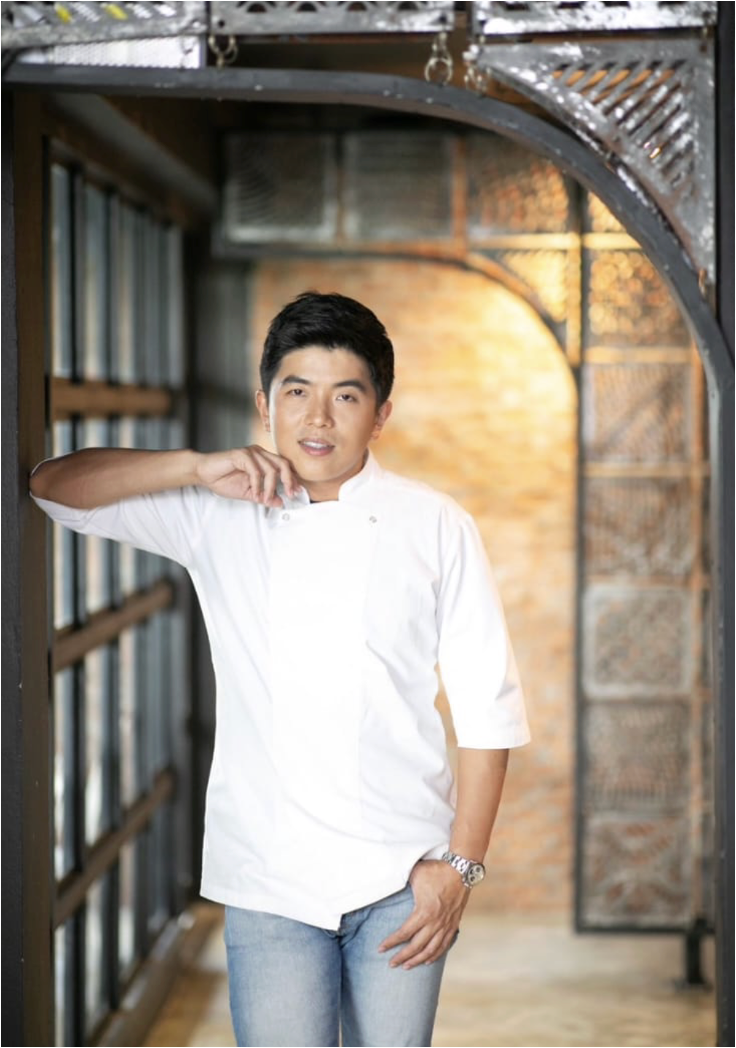
今回のリスト作成にご協力いただいたもう一人のスターは、2014年に故郷のタイ東北部ウドーンターニーに画期的なレストラン『Samuay & Sons(サムエイ&サンズ)』をオープンしたヌム・シェフです。彼はここで、採集した食材を高級料理店での食事に仕立て上げ、国内で急速に広まりつつある「Farm to Table(農場から食卓へ)運動」を支持しています。
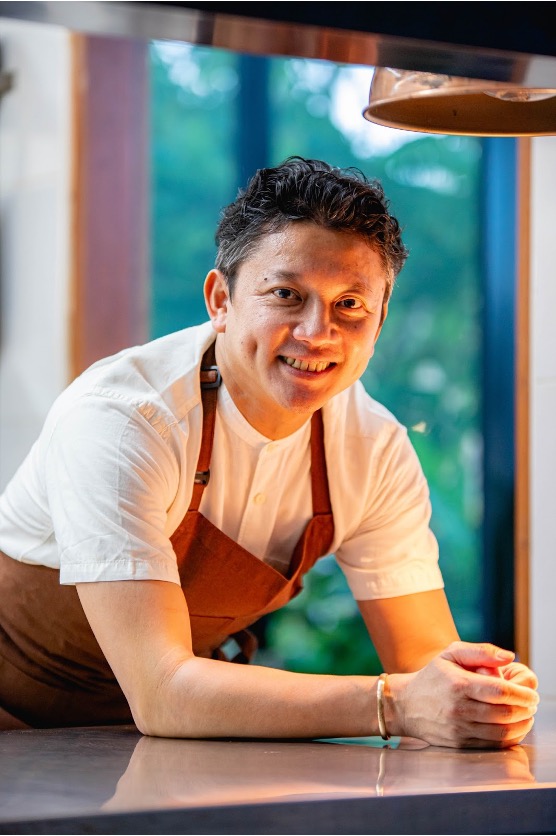
シェフ2人は、タイで食べるべきもののリストに必ず入れるべき5つの料理を挙げてくれました。
1) カオソーイ
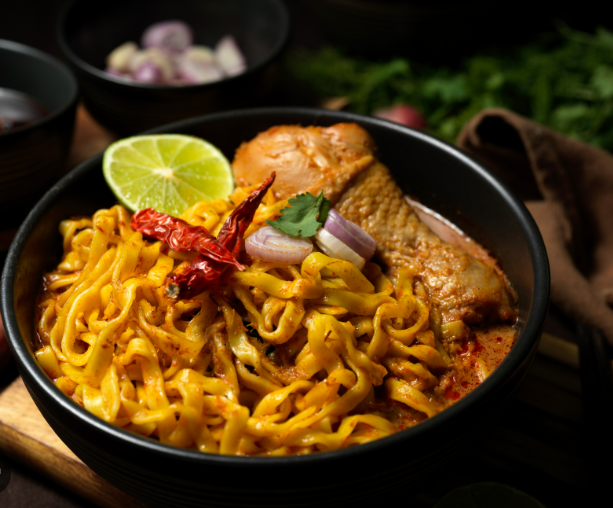
カオソーイはタイ北部発祥の、濃厚でクリーミー、少しスパイシーな黄色いココナッツスープをベースにした料理で、様々な地域から取り入れた要素が組み合わさった、実に素晴らしい一品です。レッドカレーペーストとココナッツスープが混ざり合い、スパイスが美味しく滑らかに効いています。「これは世界で最もおいしいカレーヌードルのひとつだと思いますので、タイを訪れる方は誰でも、この素晴らしくスパイシーでクリーミーな牛肉たっぷりのカオソーイを試してみるべきです」とトン・シェフは言います。
牛肉の代わりに鶏肉や豚肉を使うこともあります。ソフトな平たい卵麺とカレーの上には、カリカリに揚げた麺と刻んだコリアンダーをひと掴みトッピング。この心が安らぐ一品には、ライムのくし形切り、キャベツのピクルス、エシャロット、唐辛子などの調味料が添えられます。箸と大きなスープ用スプーンを使い、大きな音を立ててすすりながら食べるのが最高です。
2) ラープ
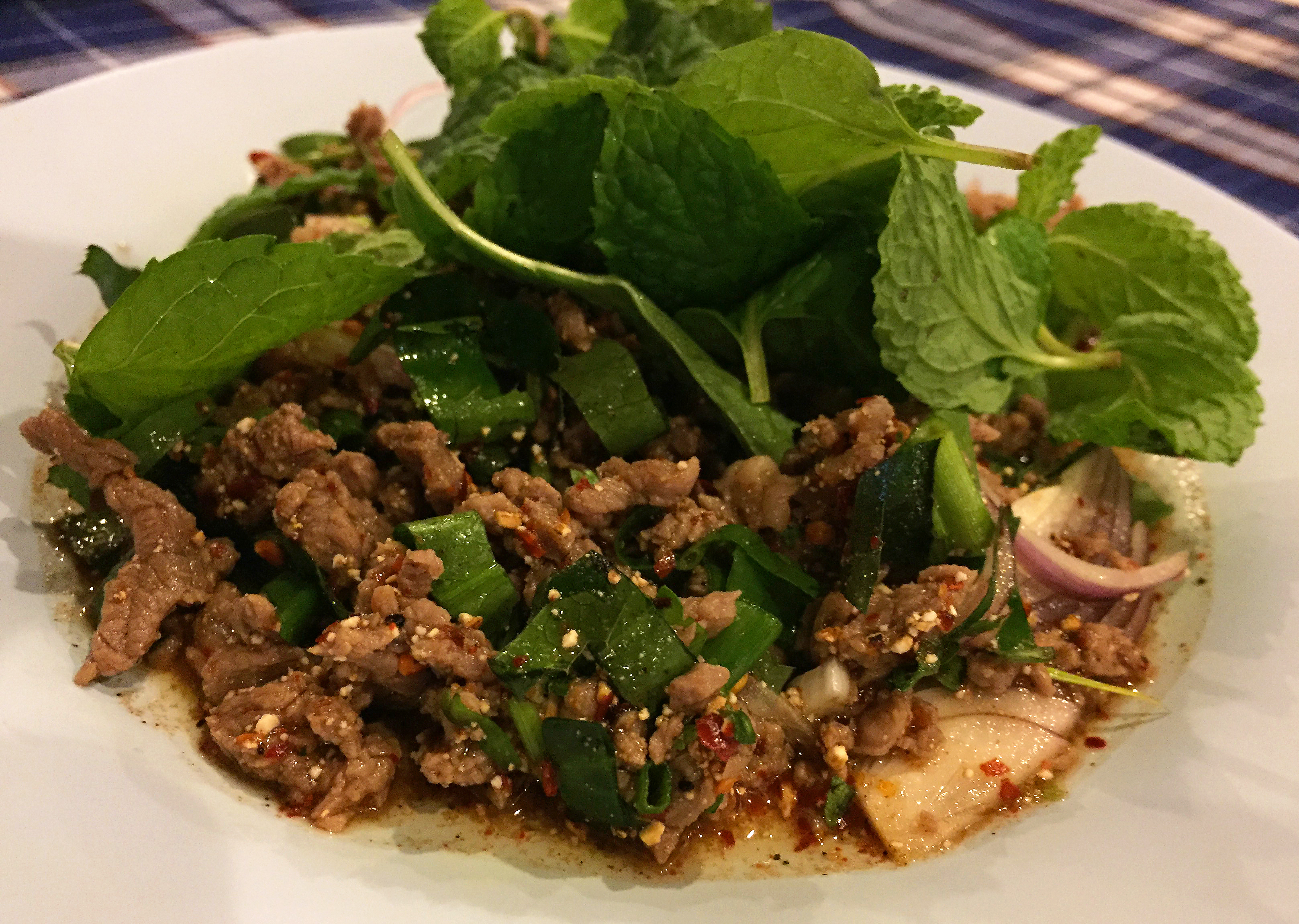
トン・シェフによると、「これはいわゆる東洋風のサラダで、 牛ひき肉、豚ひき肉、あるいは鴨肉を使用」し、ラルブ、ラーブ、ラープ、あるいはラップなどと呼ばれています。トン・シェフの好きな呼び方は、ラープです。これらはすべて、塩味と酸味のきいた肉サラダを指し、ラオス、ミャンマー、中国南西部にもそのバリエーションがあります。最もポピュラーなのは、タイ東北部イサーン地方の「ラープ・イサーン」です。
「イサーン地方としても知られる東北地方は、タイの隠れた宝石だと思っています」と語るヌム・シェフは、イサーン料理の第一人者であるだけでなく、世界の料理地図にもその名を刻んでいます。ラープは、単にハーブの爽やかさ、乾燥唐辛子の辛さ、ライム果汁の酸味で美味しい料理というだけでなく、この地域の文化やコミュニティの重要な一部でもあります。
「昔は、地元の人たちが儀式を行うときは、いつもみんなで集まって、鼻から尻尾まで全てを食べるという考えのもと、料理を作っていました」と語るヌム・シェフ。「豚や牛の命を奪うことは、村人全員が食べるのに十分な食料を儀式で確保するための活動の一環です。ラープでは、肉をミンチにして新鮮なハーブと混ぜます。肉をミンチにすることで、大人数でも食べられる量に増やすことができます」。
3) クイジャップ
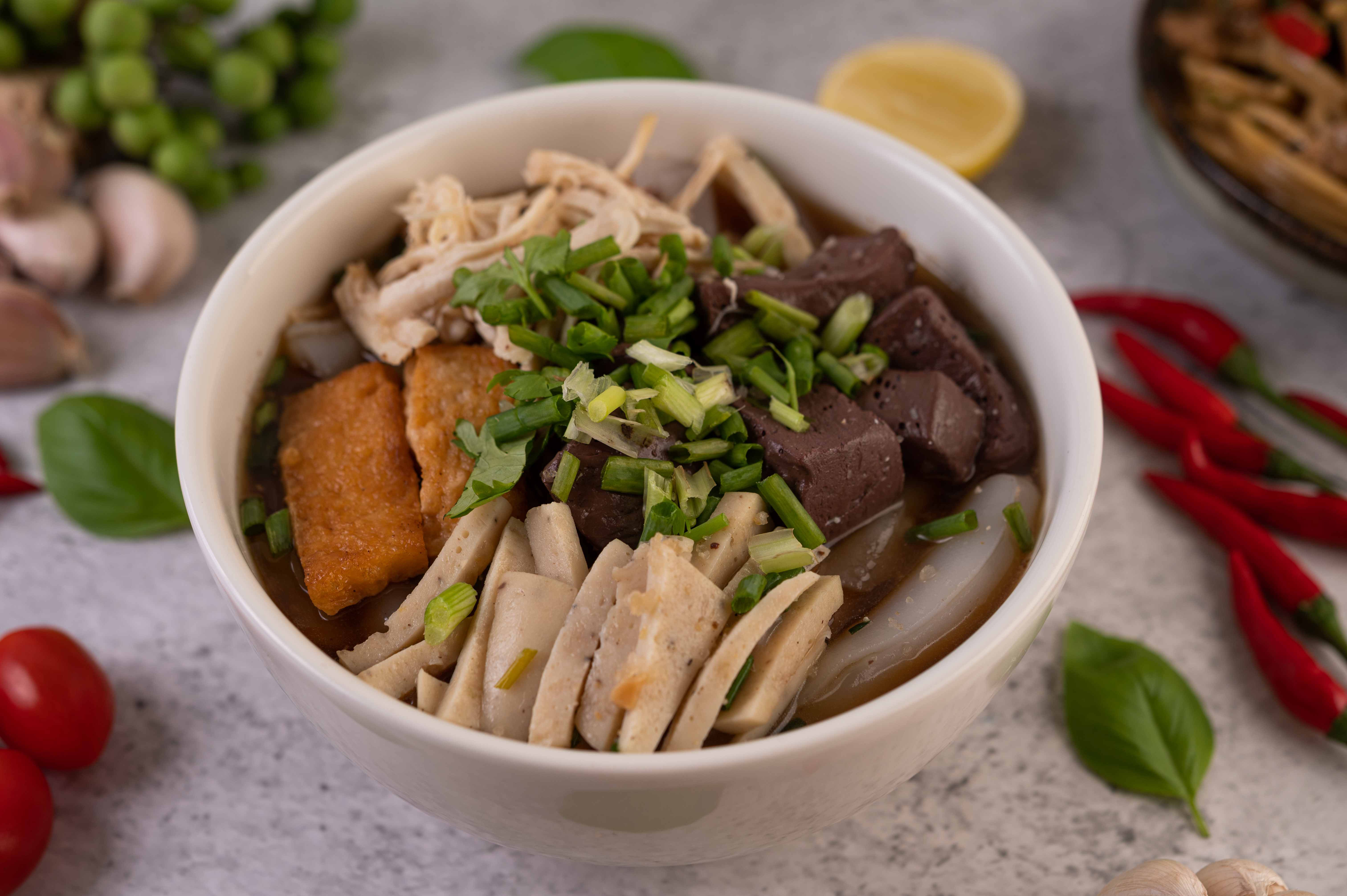
トン・シェフによると、「クイジャップはタイ風中華料理で、巻いた米麺に、さまざまな種類の豚の内臓(腸、レバー、バラ、肺などあらゆるもの)を入れたものです」。屋台などでは、胡椒スープ麺として売られていることもあり、かなりコショウの効いた料理であることがわかります。
この料理は、地元の人が勧める屋台で食べるのが一番美味しいでしょう。ですので、地元の人に絶対に聞いて回ってください。「私たちはたいてい朝食や昼食、あるいは夜遅くに食べるのですが、バンコクのチャイナタウンで食べることができます。超美味ですし、私にとっては癒しの一品です」。どうです?試してみないとわかりませんよ。
4) タイ風フライドチキン
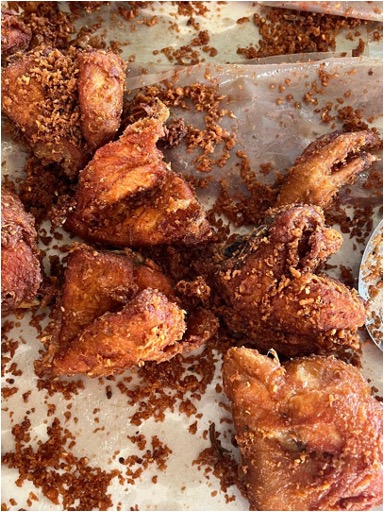
この「一番」という言葉は非常に主観的なもので、それを証明する尺度がないことも多いのですが、オンラインでサクッと調査すると、多くの人がタイ風フライドチキンを今まで食べた中で一番おいしいと思っていることがわかります。世界中の何百万人もに愛されている、カリカリ、サクサク、黄金色のドラムスティックを、タイ南部風にアレンジしたものを想像してみてください。
「タイ南部には、あちこちに大きなタイ系イスラム教徒のコミュニティがあります」とヌム・シェフは言います。「彼らはフライドチキンを作るのがとても上手なんです!とてもシンプルに聞こえますが、タイ風フライドチキンには必ず、カリカリのスパイスや、エシャロット、ニンニク、ターメリックなどのハーブが添えられています。地元の人たちは朝、カノムジェンナムヤ(あっさりしたカレースープで食べる米麺や春雨の一種)と大きなかごに入った季節の地元野菜と一緒に朝食として食べます」。
カーネル・サンダース氏、聞いてますか?
5) 南部カニカレー
タイ南部の定番であるこの料理には、スーパーで見かけたことのあるような、あるいは試しに使ったことのあるような、タイのバードアイ唐辛子、ガランガル、レモングラス、カフィアライムといった食材がふんだんに使われています。
「唐辛子のおかげでとてもスパイシーです」と大好きな料理を語るトン・シェフの声からは、その思いがひしひしと伝わってきます。 「クミン、新鮮なハーブ、新鮮な唐辛子がスパイシーかつ香りが豊かで大好きなのです。米麺や米と一緒に食べたり、いろいろな種類の南部野菜と食べることもできます」。
タイ南部には海岸沿いの町が多く、国内でも最高級の新鮮なシーフードが豊富に獲れます。カニがお好きな方は、ぜひお試しください。
6) クイティアオルア
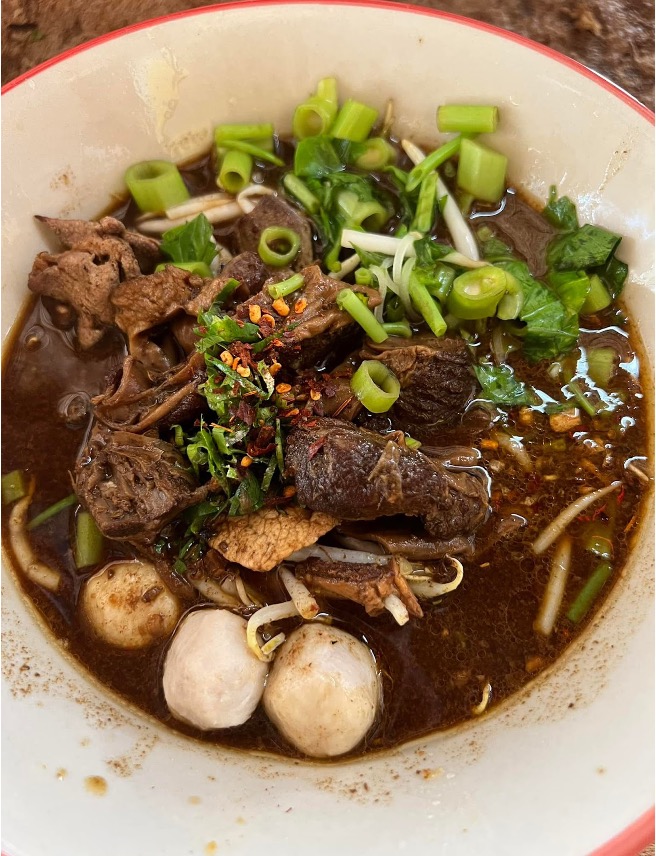
昔からバンコクの運河や川に浮かぶボートで売られていたため、ボートヌードルとも呼ばれるクイティアオルアは、その風味豊かなスープのおかげで全国的に人気のある麺です。ヌム・シェフによると、「少量の米麺に薄切り肉や内臓の煮込みなど、いろいろなものを少しずつ入れて食べます。牛肉か豚肉が選ぶことができます」。
このボートヌードルには、レモングラス、コリアンダー、ガランガル、八角、大豆といったアジアのスープ食材が使われていますが、このスープの隠し味は、牛や豚の血です。これがスープにとろみとコクを与えます。麺が小さな器で提供されても、だまされたとは思わないでください。これはその歴史に沿ったものなのです。もともとボートからお客さんに渡していたので、大きな器では渡しにくかったのでしょう。この歴史トリビアとともに、大きな音を立てながらご賞味ください。
7) ガパオライス
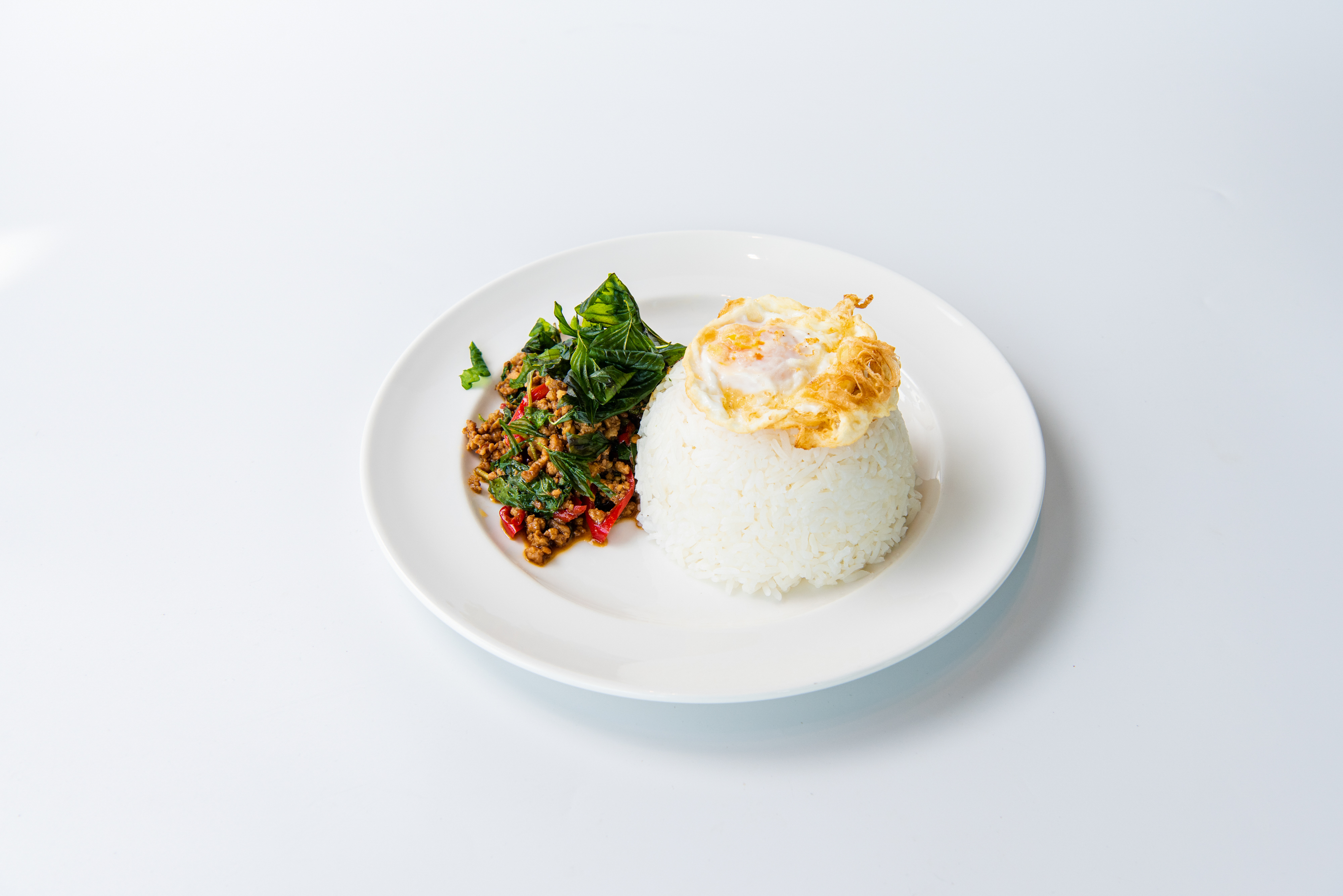
「タイ人にランチに何を食べたいか尋ねたら、10人中8人はガパオライスと答えると思います」とトン・シェフは笑います。「ガパオライスは何の肉を使っても作れますが、ほとんどは豚肉、鶏肉、牛肉を使います。唐辛子、ニンニク、ホーリーバジルで炒め、オイスターソースと魚醤で味付けします。ご飯の上に目玉焼きをのせて食べるのが一般的です」。
タイ風バジルチキンとしても知られるこの料理は、辛さに強い人向けです。ガパオライスはタイ人にとって、いつでもどこでも手に入り、毎日たくさんの人が手にしているという意味では、パリ人にとってのサンドイッチ、インド人にとってのチャートのようなものになります。「街角のいたるところで、どんなレストランでも食べることができます。まさにタイ風です」。
Dhvani を インスタグラム でフォローしてください。
Created with Tourism Authority of Thailand
Recommend
-
 36
36
All of logic can be encoded with a suitable type theory and this includes the usual existential and universal quantifiers. The universal quantifier is easy because it corresponds to Π types but the existential quantifier...
-
 32
32
Parametric polymorphism is now widely known in the programming community (often by the alternate name generics ). They allow one to create types parameterized by another type, along with functions that work o...
-
 6
6
"Decentralized Governance is an Existential Cultural Shift" - Ben JorgensenDecember 14th 2020 new story3
-
 12
12
extra-crunch-eExtra CrunchHow Segment redesigned its core systems to solve an existential scaling crisisRon Miller
-
 16
16
Removing existential types from modules in coq-of-ocaml February 8, 2021 The tool coq-of-ocaml translates OCaml programs t...
-
 8
8
35 min ...
-
 5
5
Nobel laureates stress ‘existential need’ to act and protect humanity from future risksRepair and restore the "global commons" that allow our species to flourish — climate, ice, land, ocean, freshwater...
-
 16
16
The MongoDB Podcast: Ep. 59 Automating Database Management Part 3 Preview Mode Links will not work in preview mode ...
-
 6
6
Alain de Botton on Existential Maturity and What Emotional Intelligence Really Means “The emotionally intelligent person knows that they will only ever be mentally healthy in a few areas and at certain moments, but is committed to fa...
-
 8
8
About Joyk
Aggregate valuable and interesting links.
Joyk means Joy of geeK